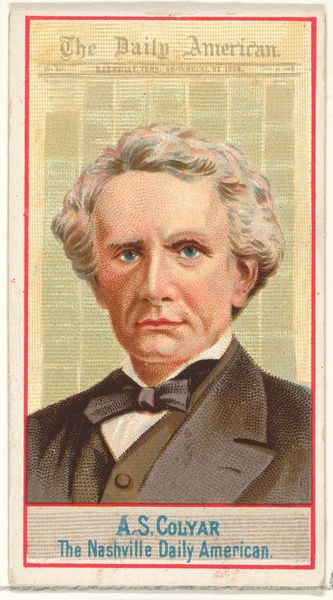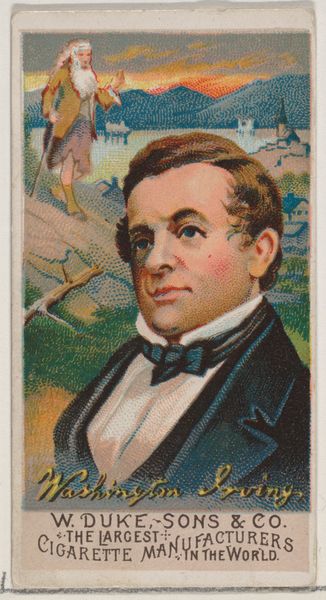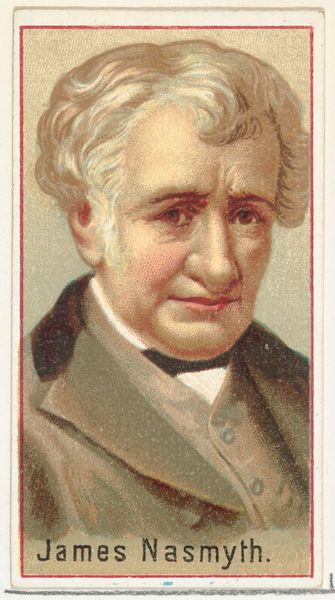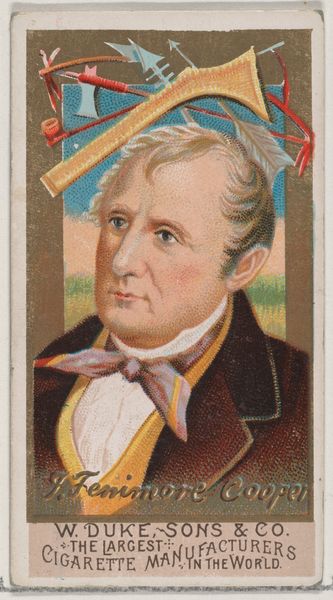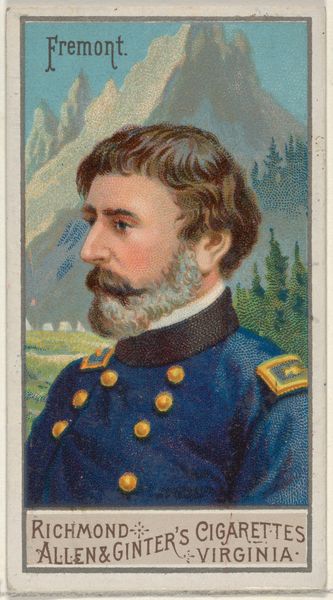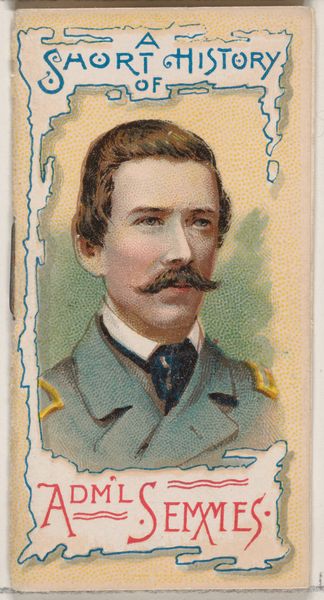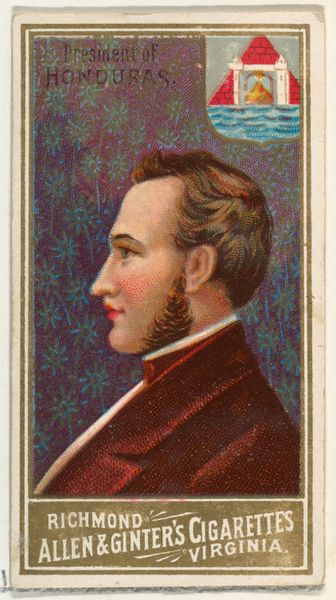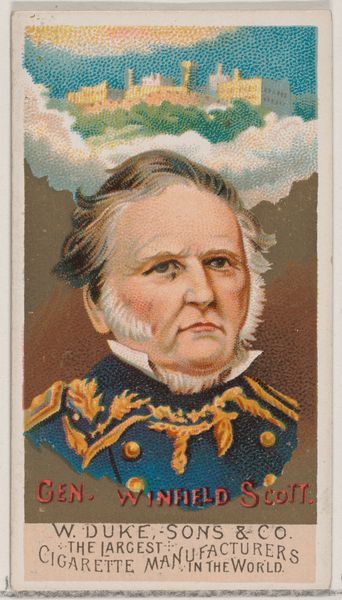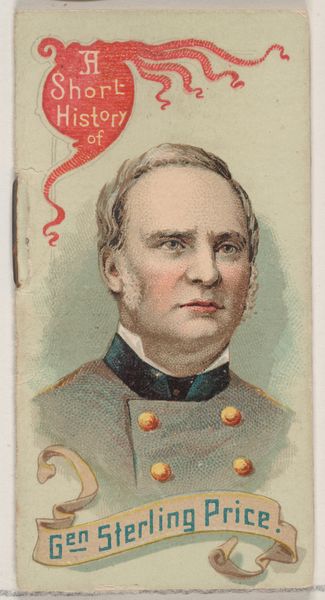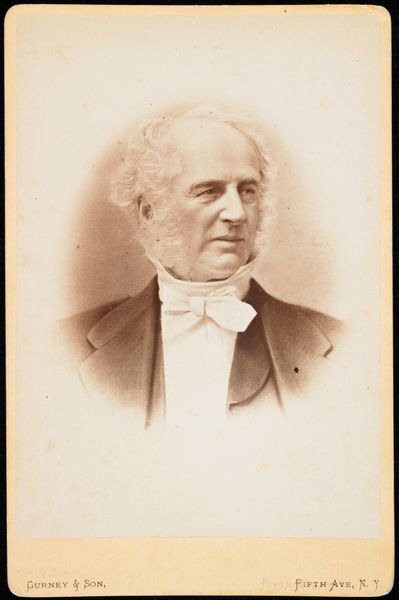
William H. Seward, from the series Great Americans (N76) for Duke brand cigarettes 1888
0:00
0:00
drawing, lithograph, print
#
portrait
#
drawing
#
lithograph
# print
#
caricature
#
men
#
genre-painting
Dimensions: Sheet: 2 3/4 × 1 1/2 in. (7 × 3.8 cm)
Copyright: Public Domain
Editor: So, this lithograph from 1888 is a portrait of William H. Seward, part of the “Great Americans” series by W. Duke, Sons & Co. It's small, almost like a trading card, and the imagery feels overtly patriotic, but a little unsettling. What strikes you about this piece? Curator: This seemingly simple portrait actually opens up a complex conversation about nationalism, consumerism, and the construction of American identity in the late 19th century. Who was considered "great," and who got to decide? Why was Seward, Lincoln's Secretary of State who championed abolition, being used to sell cigarettes? Editor: It feels contradictory. A champion of freedom endorsing a product… How do we reconcile that? Curator: The placement of the symbols are no accident. Liberty, Union and the flag become commodified here; national identity gets directly linked to consumption, which was crucial for solidifying ideas about American culture during the reconstruction era. We need to think critically about the political implications of commercial images like this and how race and labor might factor into cigarette production, and also how these cards could normalize smoking. Editor: So it's not just about celebrating Seward, but also about promoting a specific version of American values and boosting a particular industry. What did people think when it first came out? Curator: These images were widespread; distributed within cigarette packs. They played a part in the formation of a visual culture heavily invested in an often idealized past. The circulation of these cards helped reinforce who was valued as "American" while othering and excluding many. It’s a study of intersectionality. Editor: I see how it connects consumer culture with nationhood! It's definitely much more complex than just a portrait on a card. Curator: Exactly. By unpacking its layers, we reveal the embedded ideologies and power dynamics operating in this so-called "celebration" of an American figure. I guess this is a starting point to unravel those tensions between representation, consumption and ideology.
Comments
No comments
Be the first to comment and join the conversation on the ultimate creative platform.
